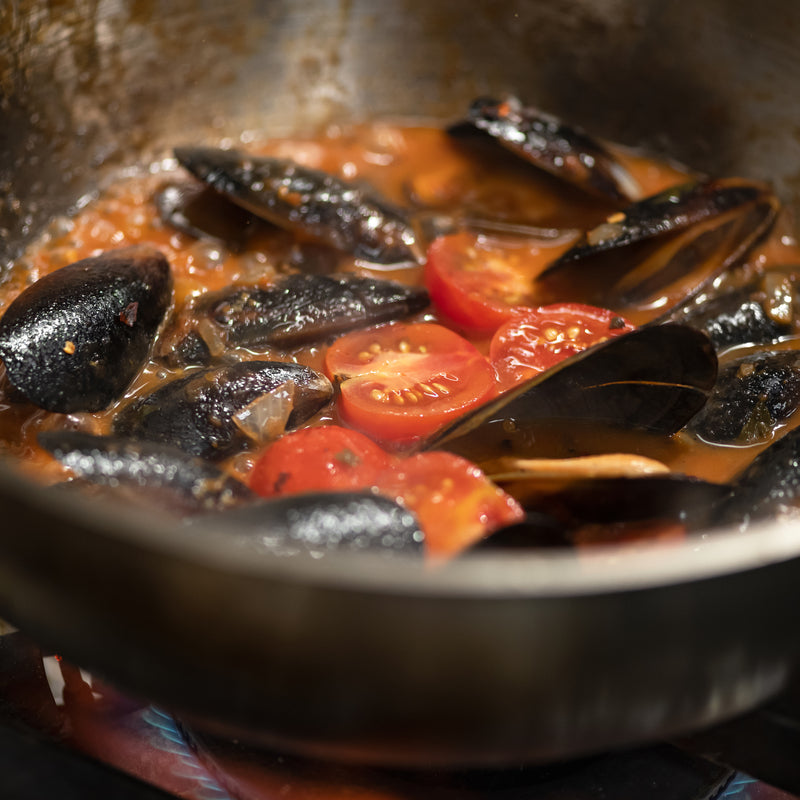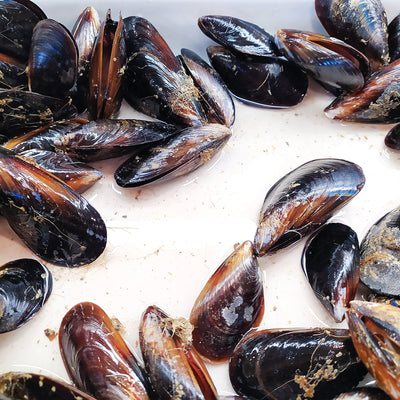Exploring the Journey of Mussels: From Sea to Plate

Mussels: From Sea to Plate
Mussels have long been a favorite seafood for both gourmet chefs and home cooks alike. Their delicate flavor, versatility in recipes, and impressive nutritional profile make them a go-to option for seafood lovers. But have you ever wondered about the fascinating journey these ocean treasures take before they land on your plate? Understanding the process of harvesting mussels, their environmental impact, and how best to prepare them can deepen your appreciation for this sustainable seafood choice.
In this article, we’ll take you through the entire journey of mussels, from their harvesting in pristine waters to their arrival in your kitchen. Along the way, we’ll dive into the nutritional benefits of mussels, offer expert tips on how to cook them, and suggest some of the best recipes for this delicious shellfish.
Why Mussels Are a Popular Choice for Seafood Lovers
Before we explore the journey of mussels from sea to plate, let’s first discuss why mussels have become such a beloved seafood option worldwide.
1. Mussels Are Nutrient-Dense
Mussels aren’t just a tasty treat; they are packed with essential nutrients that benefit your health. Here’s why mussels are considered a nutritional powerhouse:
-
High in Lean Protein: Mussels are an excellent source of protein, providing around 18 grams per 100 grams of mussels. For those looking to maintain or build muscle, mussels are a lean protein option that can easily fit into a balanced diet.
-
Rich in Omega-3 Fatty Acids: Omega-3s are known to promote heart health and reduce inflammation. Mussels are particularly high in EPA and DHA, two omega-3 fatty acids that are essential for cardiovascular health. According to the American Heart Association, eating omega-3-rich seafood like mussels can help lower the risk of heart disease.
-
Vitamins and Minerals: Mussels are loaded with essential nutrients, including:
- Vitamin B12: Critical for nerve function and red blood cell production.
- Iron: Essential for oxygen transport in the blood and overall energy levels.
- Zinc: Supports a healthy immune system and promotes healing.
- Selenium: A powerful antioxidant that protects cells from damage.
The Sustainable Journey of Mussels
One of the most compelling reasons to choose mussels is their sustainability. Mussels are one of the most environmentally friendly seafood options because they are filter feeders, meaning they naturally clean the water around them by filtering plankton and nutrients from the water.
1. How Mussels Are HarvestedMussels are typically farmed in coastal waters, where they are grown on ropes or other structures that hang in the ocean. This method of suspended aquaculture is highly sustainable because it doesn’t require feed, fertilizers, or antibiotics. Instead, mussels thrive by filtering the natural nutrients in the water.
This method not only minimizes environmental impact but also helps improve water quality by removing excess nutrients. As a result, mussel farming is often referred to as a "net positive" form of aquaculture.
Quote:
"Mussel farming is a highly sustainable practice that benefits both the environment and consumers. These shellfish are a natural part of the marine ecosystem, helping to clean and balance the waters." – Marine Stewardship Council
2. Mussels’ Role in Marine Ecosystems
In addition to their low environmental impact, mussels play a critical role in maintaining healthy marine ecosystems. By filtering large volumes of water, mussels help reduce harmful algal blooms and excess nutrients that can damage coastal ecosystems. Choosing mussels as your seafood of choice means you’re supporting a healthy marine environment.
Cooking Mussels: Expert Tips and Techniques
Mussels are known for their ease of preparation and their ability to adapt to a wide range of flavors and cooking methods. Whether you’re steaming, grilling, or baking mussels, they can easily be transformed into a gourmet meal with minimal effort.
1. Selecting and Cleaning Mussels
Fresh mussels should have tightly closed shells. If a mussel’s shell is slightly open, give it a tap—if it closes, the mussel is still alive and safe to cook. Any mussels that remain open after tapping should be discarded.
Before cooking, rinse the mussels under cold water and scrub the shells to remove any debris. Be sure to remove the “beard,” the fibrous threads that protrude from the shell, by pulling them toward the hinge.
- Order Fresh Mussels from Global Seafoods to ensure you’re getting high-quality, sustainably sourced mussels delivered right to your door.
2. Simple Steaming Method
The classic way to cook mussels is by steaming them. All you need is a large pot and a few simple ingredients to create a delicious broth.
Instructions:
- Heat 2 tablespoons of olive oil in a large pot over medium heat.
- Add 3 minced garlic cloves and 1 diced shallot. Sauté until fragrant.
- Pour in 1 cup of dry white wine and bring to a simmer.
- Add 2 pounds of cleaned mussels, cover the pot, and steam for 5-7 minutes until the shells open.
- Serve the mussels with crusty bread to soak up the flavorful broth.
Tip: Avoid overcooking mussels, as they only need about 5-7 minutes to fully open. Any mussels that don’t open should be discarded.
3. Grilling Mussels for a Smoky Flavor
For a more unique take on mussels, try grilling them. Grilling adds a subtle smokiness to the mussels and enhances their natural sweetness.
Instructions:
- Preheat your grill to medium-high heat.
- Place the mussels directly on the grill and cook for 5-6 minutes until the shells open.
- In a small saucepan, melt butter with garlic, lemon juice, and fresh herbs.
- Drizzle the butter mixture over the grilled mussels and serve immediately.
Delicious Mussel Recipes to Try at Home
Mussels are incredibly versatile, working well in everything from classic French dishes to spicy Asian-inspired meals. Here are a few gourmet mussel recipes you can easily prepare at home:
1. Moules Marinières (French Steamed Mussels)
Ingredients:
- 2 pounds fresh mussels
- 1 cup dry white wine
- 2 garlic cloves, minced
- 1 shallot, finely chopped
- 2 tbsp butter
- Fresh parsley, chopped
Instructions:
- Melt butter in a large pot over medium heat.
- Add garlic and shallots, and sauté until fragrant.
- Pour in the white wine and bring to a simmer.
- Add the mussels, cover, and steam for 5-7 minutes until the shells open.
- Garnish with fresh parsley and serve with a side of crusty bread.
2. Spicy Mussels in Coconut Curry
For a spicy, rich dish with bold flavors, try mussels in a coconut curry sauce.
Ingredients:
- 2 pounds mussels
- 1 tablespoon olive oil
- 1 onion, diced
- 1 tbsp red curry paste
- 1 can coconut milk
- Fresh cilantro, chopped
Instructions:
- Heat olive oil in a large pot over medium heat.
- Add onion and sauté until soft, then stir in red curry paste.
- Pour in the coconut milk and bring to a simmer.
- Add the mussels, cover, and cook for 5-7 minutes until the shells open.
- Garnish with fresh cilantro and serve over jasmine rice.
Where to Buy Fresh Mussels and Seafood Online
To enjoy mussels at their freshest, it’s important to buy from a trusted source. Global Seafoods offers premium, sustainably sourced mussels and other seafood products, delivered straight to your door.
Explore the Best Mussel Products:
- Mussels – Fresh, sustainably sourced mussels perfect for steaming, grilling, or baking.
- Clams – Ideal for chowders, pasta, or steaming with garlic and herbs.
- Geoduck – A prized seafood delicacy with a sweet, rich flavor.
- Gooseneck Barnacles – A unique and adventurous seafood option.
- Abalone – Tender and flavorful, perfect for gourmet recipes.
- Sea Urchin Uni – A prized sushi ingredient known for its creamy texture.
- Sea Urchin – An exotic seafood option that elevates any dish.
Conclusion: The Journey of Mussels from Sea to Plate
The journey of mussels from the ocean to your table is a remarkable one, marked by sustainability, nutritional benefits, and culinary versatility. Whether you're steaming them with a simple broth, grilling them for a smoky flavor, or incorporating them into spicy dishes, mussels are a true culinary delight.
Ready to experience mussels at their finest? Visit Global Seafoods to order fresh mussels and explore more seafood options for your next gourmet meal.
For more recipe ideas, cooking tips, and seafood inspiration, subscribe to the Global Seafoods YouTube Channel: https://www.youtube.com/@Globalseafoods/shorts.
Also in Recipes

How to Cook Live Manila Clams at Home: Fresh, Sweet & Delivered Overnight
Discover how to store, clean, and cook Live Manila Clams at home using simple chef techniques. Learn why these Pacific clams are perfect for pasta vongole, steaming, chowders, and more—plus how to order them fresh in a convenient 10 lb bag shipped overnight.

Boiled Crab for Brunch: The Ultimate Guide to Morning Seafood
Discover the joy of Boiled crab for brunch! Learn how to prepare seafood in the morning, its health benefits, and recipes to make your brunch memorable.


